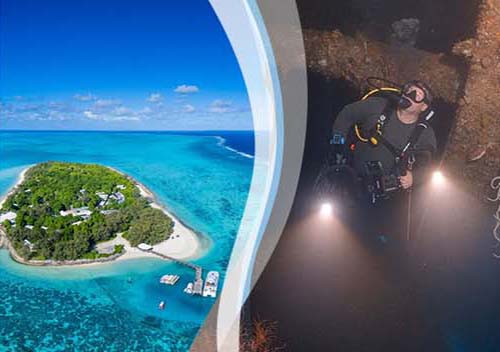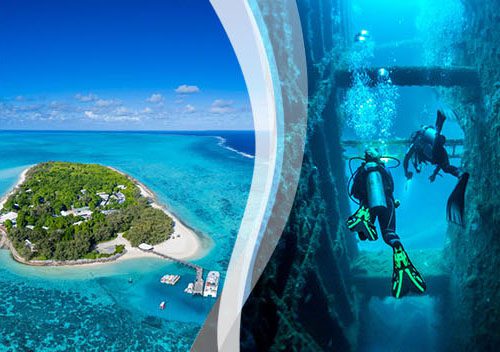The diving at Uepi is spectacular – it’s a great place to experience the fantastic marine life that the Solomons has to offer; and for a very good reason: it’s a barrier island between Marovo Lagoon and the deep blue sea beyond.
“So far this season, we have had more successful swims with the whales than ever before – it seems there are more whales and calves around for this time of the season – and they seem more curious as well” – Diveplanit reports with pix and video.
With so many really special dive sites around Australia, to ask us to pick our favourite spot is a big ask. But that’s exactly what Bupa Travel Insurance asked us in their recent article, ‘Scuba Diving Adventures Around Australia’.
More often than not, the best diving is off the beaten track. In the case of diving Kadavu and Taveuni, this holds particularly true as their dive sites include the world class dive sites of the Great White Wall, Rainbow Reef and the great Astrolabe Reef.
Heard the name Raja Ampat, but not quite sure what makes it so special? In three words: location, location, location. In one: Biodiversity. But why, and how, and why again? Diveplanit explains.
Huon and the DPI are planning a fish farm right next to Broughton Island at Port Stephens – with no Environmental Impact Assessment on the local marine fauna and the tourism industry that depends on it.
One of the most common mistakes divers make is insufficient dive planning. Dive plans do not need to be complicated – in fact, often the simpler the better. DAN provides some pointers on the basics of a dive plan.
Between May and July each year thousands of giant cuttlefish choose a remote patch of coastline between False Bay and Fitzgerald Bay near Whyalla, South Australia to aggregate and spawn. It’s estimated that this year between 150,000 and 200,000 individuals are present right now.
In its report: ‘Toxic tide: the threat of marine plastic pollution in Australia’ published April 2016 by the Senate, every major point that environmental groups raised was assessed. The findings back the call for action on marine plastic with 23 very specific recommendations
With increasing populations using increasing amounts of plastic – a material with a 2% recycling rate – we need to reduce our use of single use plastics in particular. Here are six simple actions that don’t require a lifestyle change.














